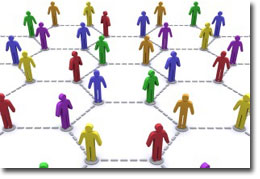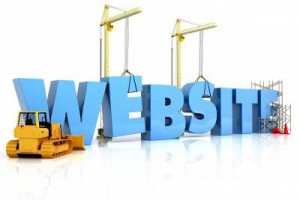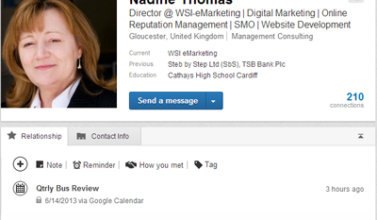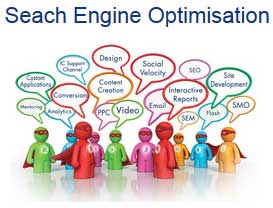
Whichever way you look at it, content marketing is a broad subject but regardless of industry, business type or size, quality content remains essential. The way we search for information has literally paved the way for smart marketing strategies and when it comes to content marketing, it’s all about engagement and conversions.
The secret lies in creating and distributing valuable, relevant, and consistent content. Any good online marketing strategy should be designed to attract and retain loyal customers while educating them in the process. Get this process right and the results will speak for themselves with more prospects becoming customers.
Creating average content without a clear goal in mind or adding real value could actually do more harm to your business than good. Implementing a sound inbound marketing strategy can dramatically increase your web traffic and conversion rates. Before we get started, let’s take a quick look at traditional marketing versus inbound marketing.
Traditional Marketing Explained
Traditional marketing techniques involve ads like television or radio commercials, billboards and direct mail. These are often costly and also very difficult to accurately measure results (ROI). Since your marketing message is going out to a large number of different people who might not even want your product or are not ready to purchase, many compare traditional marketing to shooting in the dark.
What Is Inbound Marketing?
Inbound Marketing is different than other types as it is a total methodology. Where Native Marketing, Interruption Marketing, Social Media Marketing and Content Marketing all focus on something unique, Inbound Marketing instead focuses on targeted techniques. This includes content creation, search engine marketing (SEO, SEM), branding and social media. These elements cover everything that helps potential buyers find your brand when they are actually ready to buy. In most cases, this approach often results in more qualified leads moving into your sales funnel.
Content Marketing, Web Traffic And Conversions
Without stating the obvious, the whole idea of business is creating interest, driving traffic and turning new visitors into customers. That said, it’s vital to treat each prospect as an individual and not to see them as one general group. To put your business on the right track, follow these simple steps to increase your web traffic and conversion rate.
Create Quality Content For The Entire Buying Cycle
Before anyone can find you online, you must first create compelling content to attract the right people to your site. This process is often referred to as “content marketing” because it essentially uses content as a way to attract web visitors and increase traffic to your site.
Remember, not everyone is at the same stage of the buying cycle so your content must speak to everyone, not just a select few. Here, the context of communication is absolutely crucial. Some of the most common types of content include blog posts, white papers, e-books, infographics, webinars, podcasts and videos.
Attract The People Who Need Your Products And Services
While anyone can drive traffic to online content, what’s the point if most of the leads find the info irrelevant? Don’t waste your marketing budget on general marketing tactics, be smart about your content and who you target.
Use advanced search marketing techniques and optimising keywords targeted at your desired audience. Not only does this ensure that your content is easy to find but that it attracts (and converts) web users who are actively looking for information that you provide. Sharing your posts across social media channels using relevant keywords and hashtags is another effective way to drive traffic to your content.
Related: Learn more about keyword research and search marketing
Converting Visitors Into Leads
There are a number of ways to attract leads and when you’ve identified what works for you, it’s time to put it into practice. While a well-designed website page works well, creating a unique landing page for a specific product or service is another effective tactic.
A landing page with a basic form allows website visitors to share their contact information with you but more so, it helps you identify the type of content they are interested in. Asking the right questions and listening to customer feedback can make all the difference.
Clear calls to action let visitors know what you want them to do and also directs them to the specific landing pages you have created. As you continue building a list of people interested in your content, you can now take the nurturing process a step further. It all comes down to building lasting customer relationships through sharing quality content on social media or email marketing until they are ready to buy or show interest in something new you may have posted.
Convert Leads Into Customers
With inbound marketing, you can tailor your product offers and landing pages to people at all stages of the buyer’s cycle. That means you can avoid spending time and money talking to people who are not interested. Instead, a well-implemented process can help you spend valuable time talking to those at the bottom of the funnel ready to buy.
Using a marketing automation platform like SharpSpring, Salesforce, Hubspot or similar, you can even personalise automated communications with people in various stages of the sales cycle. Success depends on how well you structured your lead generation process and asking the right questions. If you listen to your customers and react accordingly, you can create compelling offers aimed at the right people at the most appropriate times.
Continuously Monitor, Analyse And Adjust Your Approach
Success doesn’t happen overnight and it will take some time to develop a suitable strategy for your business. With that, we’ve come to the final step of a successful inbound marketing campaign. The last stage is monitoring your results and making adjustments to your strategy where necessary.
Perhaps some leads are getting stuck somewhere in the sales funnel or you get loads of interest but almost no conversions. Properly monitoring and analysing your data will help you determine whether certain areas of your approach need tweaking. What else can you offer or do to help generate interest and convince people to buy your brand?
Implementing marketing automation with your inbound marketing strategy allows for a holistic overview of your prospects. You can see what they’re up to, what social sites they visit and if they like or share content or download your offers. This gives you the ability to work out where they are in the buyer’s journey and subsequently segment and personalise your content.
If you need assistance with your existing marketing strategy, please get in touch today to find out how WSI eMarketing can help you.
Related Post
Content Sharing Via Social...
Target marketing to meet your business goals Is your business using social media channels...
- June 15, 2011
- By Nadine Thomas
- Digital Marketing
Can you get help to fund your...
If you need a new website, it’s possible that you could get help towards the cost....
- May 30, 2013
- By Rob Thomas
- Digital Marketing
10 Best Ways to take...
Others may have seen a pop-up ‘invitation to upgrade’ message when they accessed...
- June 1, 2013
- By Rob Thomas
- Digital Marketing
Google Hangouts – 6 Ways...
Google+ was launched just 2 years ago in June 2011. In the first 6 months of its...
- June 24, 2013
- By Nadine Thomas
- Digital Marketing
6 top tips on how to get the...
In Europe alone there are 243.2 million Facebook subscribers (internetworldstats, 2012)....
- July 3, 2013
- By Nadine Thomas
- Digital Marketing
What is SEO?
SEO or Search Engine Optimisation to give it its full name is the process that helps your...
- July 29, 2013
- By Nadine Thomas
- Digital Marketing











Leave a Comments